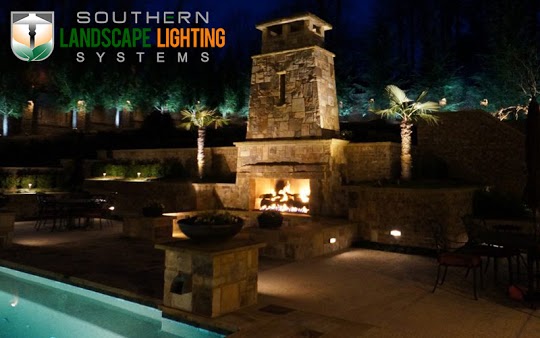There are many different types of lighting – from floodlights to spotlights, path lights, and area lights. Southern Landscape Lighting Systems shares their tips on selecting spotlights for a landscape lighting installation as they play an integral role in transforming the exterior of a house and property.
Spotlights have their origins in theatre and show business and were used to light up the main actors on the stage. Today, in landscape lighting designs, they perform a similar function drawing emphasis on a landscape or architectural feature. Different from floodlights that give light to a wide area, spotlights have a much narrower focus with a beam that highlights one feature at a time.
Outdoor lighting isn’t designed to flood the exterior of your home with light. Rather, it is the interplay of light and shadow that adds depth to a garden landscape after dark. The selective application of spotlights creates visual accents on a home’s walls or sidings.
There are different ways to add spotlights to your property, such as:
Exterior Walls
The spacing and positioning of spotlights that shine on a wall is key to creating a visually appealing exterior. Where the siding or wall is plain without windows, spotlights should be positioned so that the beams overlap about halfway up the wall.
Columns
If your home has columns, these provide an ideal architectural feature for spotlighting. With columns there is usually a white section between the columns under the eaves; this is where the beam from each column should meet the next (halfway along). Using this design, a popular choice of spotlight is a well-type flush set fixture which presents the column in its best light with the illumination starting at the bottom of the column.
Second Story
Outdoor architectural lighting aims to reveal the shape of the most important structures on the property so they can be seen even on a dark night. This requires that the upper story of a building is also illuminated along with the lower story. This represents a challenge for the landscape lighting company during the installation process as the spotlights will need to be mounted either under the eaves or in gutters. An alternative to this is to use narrow beam spotlights that are positioned from the ground and aimed to shine at the underside of the upper eaves while avoiding shining the lights into second-story windows.
Trees
Whether during the day or at night, trees are an integral part of your property’s landscape and are impressive features in their own right. When it comes to shining a spotlight on them, you will need to consider their size and shape to determine the best way to showcase them.
Tall, Expansive Trees
Large, wide trees will need more than one spotlight. An effective strategy is to use at least two 60-degree beams to illuminate the trunk and the outer edge of the canopy. The number of fixtures you use will depend on the size of the tree and the extent to which you want it to be a focal point in the design of your landscape.
Large, Narrow Trees
These trees will usually only need a single spotlight (although two will give better coverage) positioned at the base with a beam that is wide enough to light up the tree’s canopy.
Small to Medium-Sized Trees
Young or ornamental trees will need one spotlight. A 24-degree spotlight will work well for a short, narrow tree, while a short, wise tree can benefit from two 60-degree spotlights.
Southern Landscape Lighting Systems in Marietta, GA, offers engaging landscape lighting installations for their clients. With many years of experience in the industry, they consistently offer the best quality LED lighting and excellent customer service to the clients.

